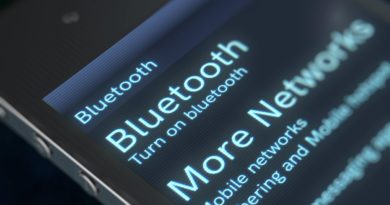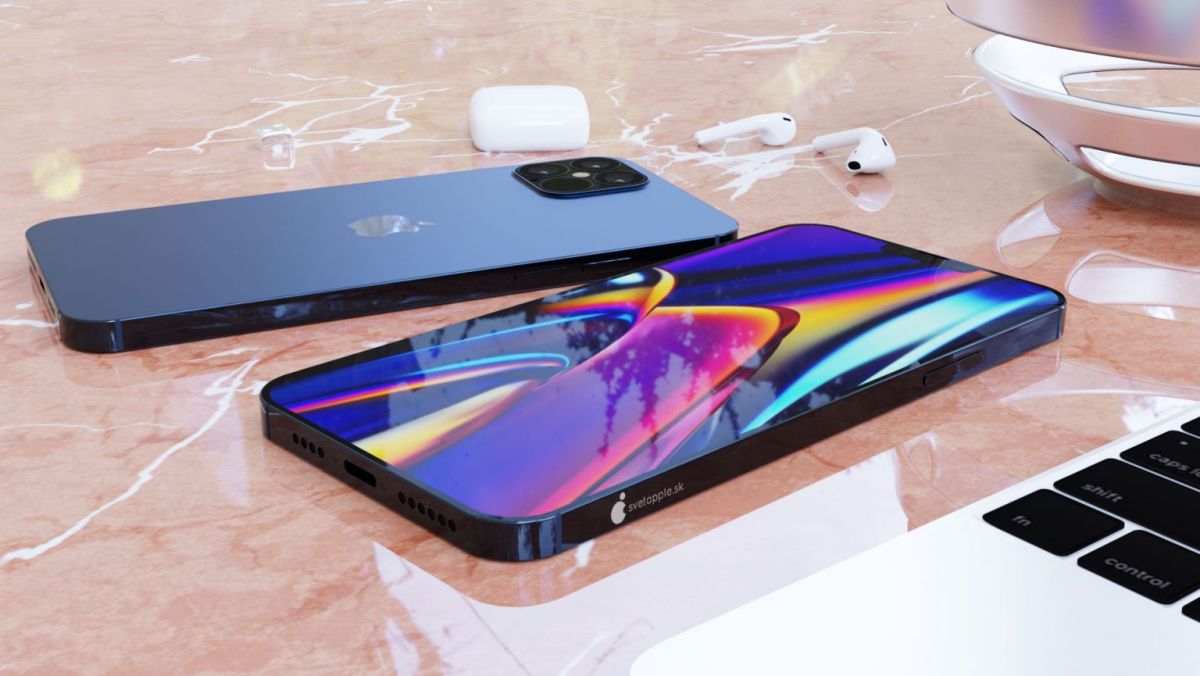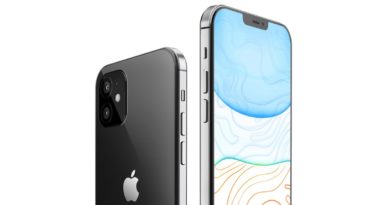iOS 14 release date, features, beta and more
We’ll get our first real look at iOS 14 this June, when Apple shows off the new features that are coming to iPhones everywhere this fall — including the new iPhone 12. But what should you expect from Apple’s new iPhone software?
Even though we’re a month away from Apple revealing what’s next for its mobile operating system, more details about iOS 14 have started to trickle out, including improved multitasking and the ability to set your own default apps. There might even be a new Fitness app offering instructional workout videos coming to your iPhone or iPad, and your iPhone could turn to AR to do more with QR codes.
While the official word on iOS 14 will come toward the end of June — likely accompanied by an iOS 14 beta — we can turn to Apple’s track record of iOS updates to make some educated guesses about release dates, compatibility and other issues.
Here’s what we know about iOS 14 so far, and what the updated OS will bring to your current iPhone as well as the new iPhones Apple plans to release this fall.
iOS 14: Release date
Apple doesn’t detail release plans in advance of any product announcement, and iOS updates are no exception. Still, the company has followed a pretty set pattern for rolling out iOS updates the past few years, and it’s easy to see history repeat itself for the iOS 14 launch.
Specifically, we can expect Apple to preview iOS 14 for the first time at its annual Worldwide Developer Conference (WWDC). This year, Apple is holding WWDC online, as the coronavirus pandemic has prevented large numbers of people from gathering in one area. That event is set to get underway on June 22, according to Apple’s developer website, so we’d expect a big iOS 14 preview at that time.
We’re also pretty confident that Apple will put out an iOS 14 beta for developers about the same time as its online WWDC event. Since iOS 9, Apple has also released a public beta for its mobile OS, usually within a few weeks after the developers get their beta. For iOS 13, the first public beta came out June 24, three weeks after the update was previewed at last year’s WWDC keynote.
During the iOS beta process, Apple releases a series of updates to stamp out bugs and fine-tune new features. Those updates roll out over the course of the summer. A public release of the new iOS version usually takes place between Apple’s fall iPhone announcement and when those new smartphones arrive in stores. We’d expect that process to repeat itself with iOS 14, so look for the new version to come out shortly after Apple unveils the iPhone 12 — whenever that may be.
iOS 14: Features
We’ll find out exactly what Apple has planned for iOS 14 in June at WWDC. Until then, we’re relying on leaks about what Apple’s planning. And unlike the iPhone 12 rumor machine, which is fueled by information that trickles out of Apple’s supply chain in Asia, iOS rumors require developers to find clues in code or for Apple to let one of its secrets slip. And Apple plays its cards pretty close to the vest.
Still, we’ve gotten a few hints about what features could find their way into iOS 14.
New multitasking interface: When you want to jump from app to app in the current version of iOS, you spend a lot of time swiping your way through a series of individual app screens. That could change in iOS 14, as Apple may introduce a multitasking interface that displays four open apps at once.
Exclusive: iOS 14 internal engineering build shows redesigned multitasking view for iPhone https://t.co/bydwDbVayhFebruary 23, 2020
The feature draws heavily on the multitasking interface Apple uses in the iPadOS and takes advantage of the larger screen sizes that have become commonplace on phones. The iPhone 11 and iPhone 11 Pro Max feature 6.1- and 6.4-inch displays, respectively, and three rumored iPhone 12 models are likely to have screens that are 6.1 inches and larger.
Set default apps: Since iOS 10, Apple has let you delete the built-in apps that come pre-installed on your iPhone — things like Stocks, Weather, Calculator and so forth. But when it comes to clicking on a link or replying to an email, you’re stuck with Apple’s Safari and Mail apps instead of third-party options.
Bloomberg reports that might change in a future version of iOS. As soon as iOS 14, Apple could let you choose your own default apps so that a different browser might launch when you click on a link. You would also be able to set a default email client under this scenario.
New list view for apps: The grid look for your iPhone home screen could be getting a refresh in iOS 14. 9to5Mac reports that Apple may introduce a List view that provides a new way to scroll through all the apps on your phone.
For an idea of what that might look like, UX designer Parker Ortolani produced a mock-up of iOS 14’s interface changes that includes alphabetical, recently used and notification tabs for a List view of apps. That last tab would show off apps by recent notifications.
New fitness app: It’s no secret Apple has an interest in helping you monitor your health and fitness activity. But iOS 14 may take that one step farther, according to a MacRumors report about a new app rumored to be called Fitness. This app will supposedly let you download guides to exercise routines across a variety of disciplines, and it will work across multiple Apple operating systems like watchOS and tvOS in addition to the iPhone and iPad.
A new AR app: Leaked files show off an icon for a Gobi app. According to John Constine, that’s an AR app that will work with QR codes to present comparison shopping features, open links and forge promotional tie-ins with partners like Starbucks. AR also figures into an updated Find My app and Apple’s upcoming AirTags trackers for helping locate tagged objects.
A way to use apps without downloading them: 9to5Mac reports that there’s a Clips tool that will let iPhone users access some app features without having to download a full app. (It’s similar to the Instant App and Slices features that Android supports.)
Wallpapers and widgets: Leaker DongleBookPro tweeted out leaked images reportedly of iOS 14 that show you’ll be able to toggle between different looks on your home screen wallpaper — in addition to the standard view, you’ll also have the option of switching between dark, dim and blurred variations. In addition, 9to5Mac reports that Apple may allow you to post real widgets to your iPhone’s home screen; currently widgets are restricted to the Today section of the iPhone.
Curious as to how that might look in practice? An iOS 14 concept video from iSpazia shows how widgets can provide more information for both native and third-party apps in box that extends the app’s icon.
Your phone as a car key: Rumors point to Apple including a CarKey API in iOS 14 that would offer system-level integration to use your iPhone as a key for unlocking your car. 9to5Mac claims to have seen the code proving the existence of this feature, further reporting that BMW will be among the first to support it.
Messages update: MacRumors also has the scoop on changes coming to Apple’s messaging app, which could let you retract texts. You’ll also be able to tag other users with @ replies similar to other chat.
5G support: We’re living in a 5G world now, as wireless carriers have launched their new networks to bring faster speeds and lower latency. Apple’s expected to join the party later this year, with the iPhone 12 adding 5G compatibility.
It’s reasonable to assume iOS will include some sort of 5G support under the hood. For instance, Android 11 — which is now available as a developer preview — is adding a tool that can detect unmetered 5G connections to allow phones to receive high-resolution video and photos. We could easily see Apple doing something similar with iOS 14 to enhance the 5G experience on iPhones that connect to the faster network.
Augmented reality support: For the past couple of years, Apple has released developer tools alongside its iOS update to help app makers build augmented reality apps that take advantage of the iPhone’s cameras. With Apple continuing to talk up the merits of AR — and with rumors pointing to some iPhone 12 models adding a time-of-flight sensor to the rear camera array — we’d expect that to continue with iOS 14.
Better mouse support: iPadOS 13 introduced the ability to connect a Bluetooth mouse to the iPad, though the feature was pretty basic and hard to find. iOS 14 will apparently add beefed-up mouse support, for both the iPhone and iPad. That’s from 9to5Mac, which saw source code for iOS 14 that suggests support gesture controls and variable cursors.
iOS 14: Should I download the public beta?
It can be tempting to join Apple’s public beta program and get your hands on the new features of an iOS shortly after they’re announced. But it invites a few risks. While Apple’s public betas are usually pretty polished, they’re still betas and can contain bugs. Your favorite apps aren’t always guaranteed to work perfectly with an iOS beta, especially early on the process.
For that reason, the advice we give with any iOS beta applies to the as-of-yet-unannounced iOS 14 version: Only install the beta on a phone you don’t need for everyday use. And if you don’t want to tangle with any potential bugs, we’d recommend sitting out the first few public beta releases, at least until Apple smooths out any show-stopping issues.
iOS 14: What devices will support it?
One advantage the iPhone has over Android is that Apple’s smartphones can all update to a new version of iOS at the same time; with Android, updates are staggered, with how fast you receive an update dependent on which phone you have and which wireless carrier provides your cellular service. Apple also does a good job maintaining iOS support for phones that are several years old.
iOS 13, for example, runs on the iPhone 6s and later, including the original iPhone SE. That means if you bought a current iPhone four years ago you can still run the latest version of iOS.
Apple hasn’t disclosed its plans for iOS 14 support (or indeed any aspect about the new OS). But a rumor from January claimed that the iOS 14 update would come to the iPhone 6s and original iPhone SE. That rumor comes from iPhoneSoft and is sourced to an Apple employee. If true, that means that devices currently able to run iOS 13 would be able to upgrade to iOS 14 when it arrives.
However, since that rumor emerged, Apple has introduced the iPhone SE 2020, a new version of its compact phone that features a A13 Bionic processor. That might bode ill for the longevity of phones powered by an A9 chip like the older SE and the iPhone 6s models.
iOS 14: iPad support
You may be wondering about iOS 14 support among iPads. That depends on Apple’s plans for the new version of iPadOS.
You may recall that after nearly a decade of developing a single mobile OS for both its phones and tablets, Apple split the iPad version of iOS into its own thing last year. That update featured a revamped home screen, multitasking improvements and other iPad-specific changes that tended to get lost in the shuffle when Apple was splitting its iOS attention between phones and tablets.
When one version of iOS was being developed for both the iPhone and iPad, Apple tended to stick to an every-other-year schedule for iPad-specific updates. That figures to change now that iPadOS is on its own. “If you like what you’ve seen us do with iPadOS, stay tuned, we’re going to keep working on it,” Apple senior vice president of software Craig Federighi said during the company’s shareholder meeting in February.
One rumored feature that could be coming to the iPad would be a developer tool called PencilKit. MacRumors reports it could allow app makers to add handwriting recognition to their apps via the Apple Pencil.
iOS 14: What we want to see
While we certainly expect to hear more about what Apple’s planning for iOS 14 between now and June, there are a few features that we hope will make the final cut.
More multitasking improvements: The rumored multitasking interface will be a welcome addition to iOS 14, but we hope Apple doesn’t stop there when it comes to borrowing features from iPadOS. Adding split-screen support to the iPhone — something you can already do on Apple’s tablets — would be a great boost for multitasking, especially with iPhone screens getting larger. Besides, this is something Android users have been able to do for a while, and the iPhone should follow suit.
Better call screening: Right now, if you want to block the onslaught of unwanted callers promising to lower the interest rate on your credit card or send you on a dream vacation, your iOS options to block robocalls are fairly limited. The Silence Unknown Callers setting in iOS will keep those callers from bothering you, but it will do the same for any phone call coming from someone who’s not in your contacts or among recent outgoing calls. We’d like to see Apple take a page out of Google’s book and adopt more sophisticated call screening features like the ones found on the Pixel.
Keep improving built-in apps: Apple always tweaks some of the features of its built-in apps, and that’s likely to continue in iOS 14. If Apple’s looking for suggestions, we wouldn’t mind better photo touch-up tools in the Photos app and a better search experience in the News app.
Better stability all around: iOS 13 was a pretty good improvement to Apple’s mobile OS, but it had more than its fair share of bugs that Apple needed to fix with subsequent updates. We hope Apple puts greater care into under-the-hood improvements for iOS 14, so that the final version is good fighting shape from the day it launches this fall — even if that means scaling back some of the new features Apple might otherwise try to squeeze into this update.


